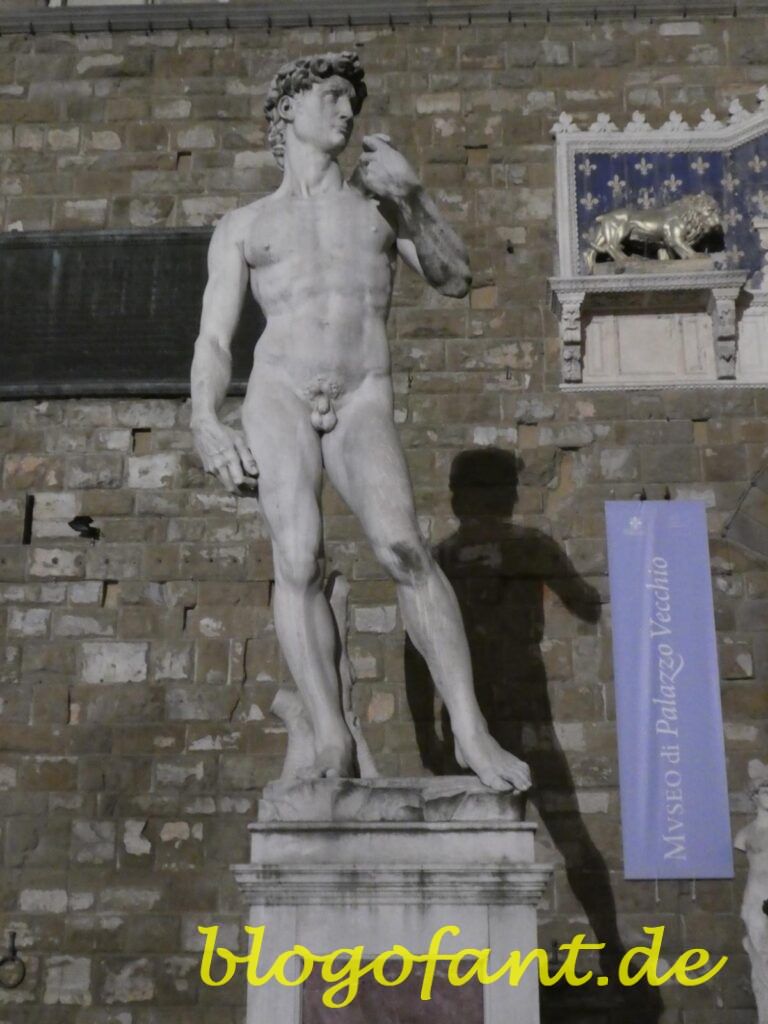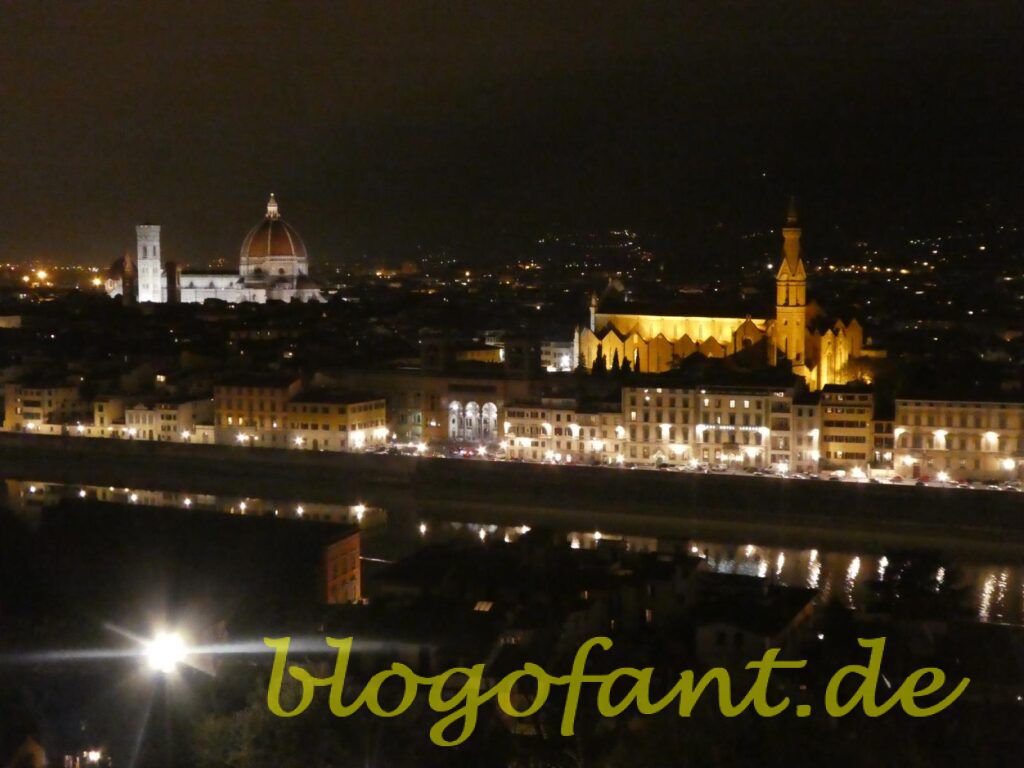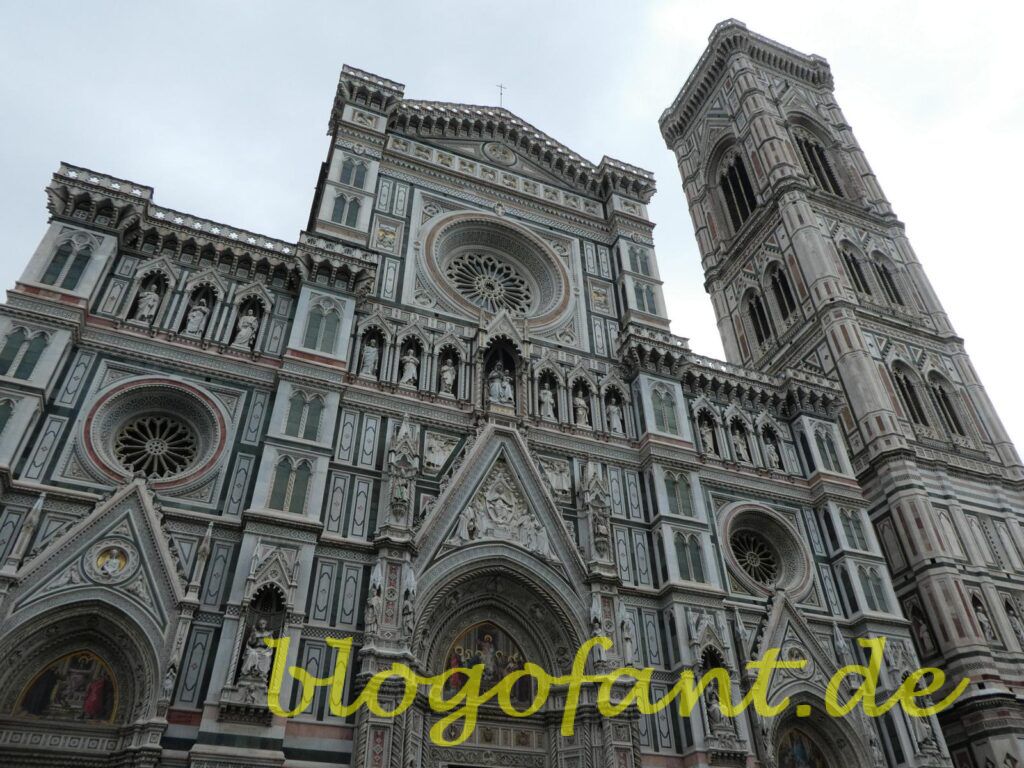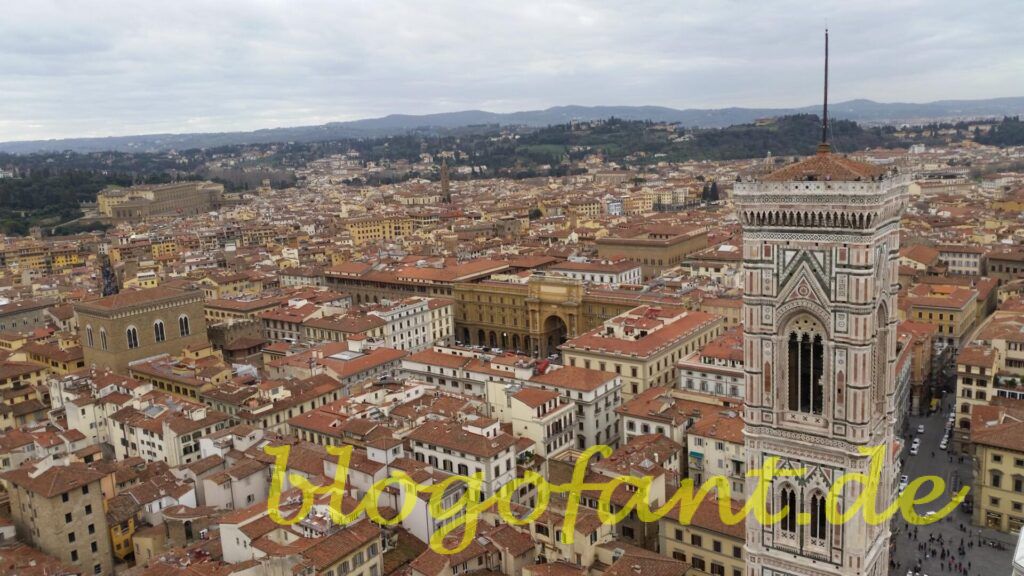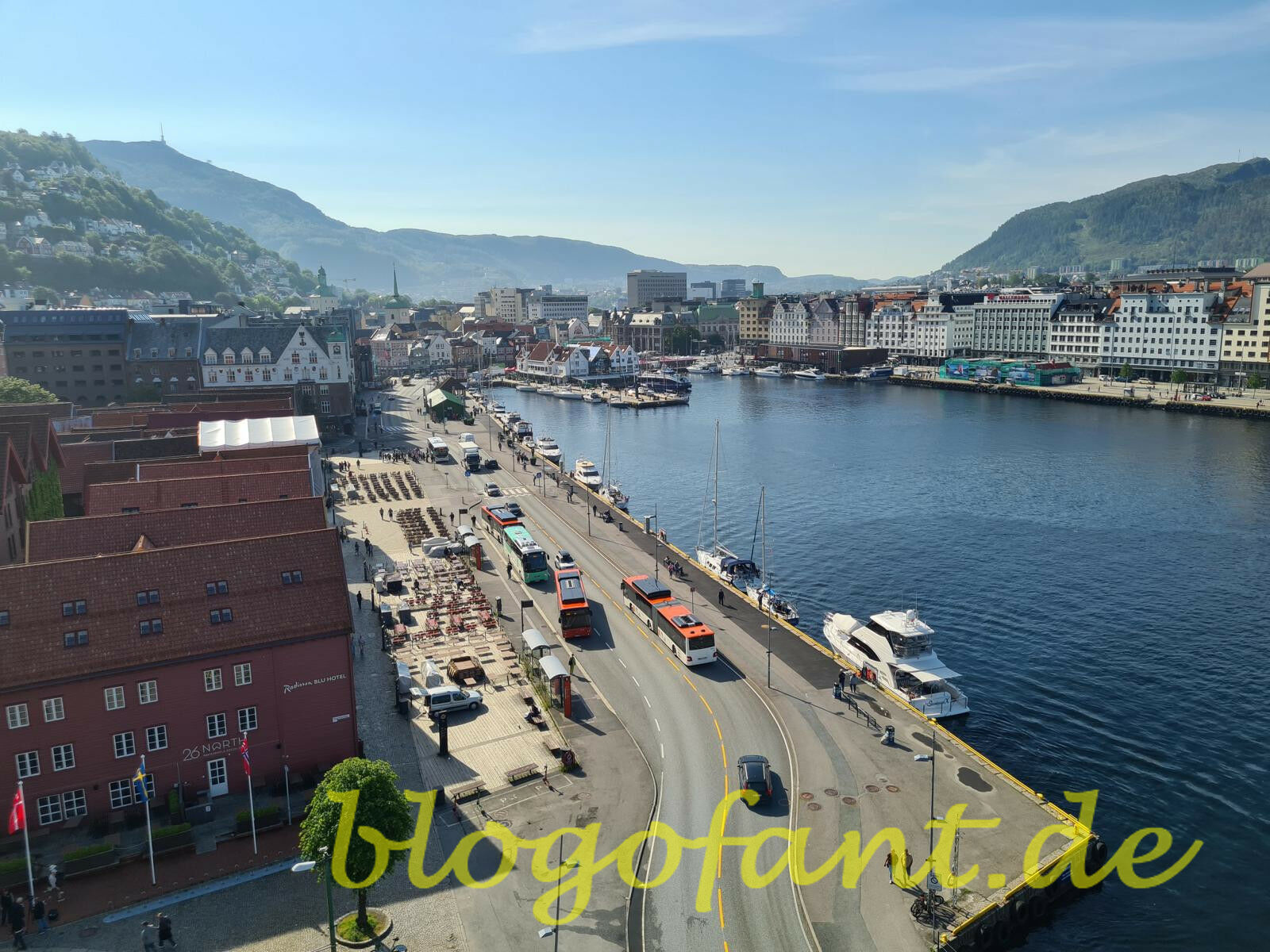Florence in 24 hours / 1 perfect day in Florence

Welcome to Florence, the heart of Italy’s Tuscany, where art and culture meet history and gastronomic delights. While it’s impossible to see and experience everything this wonderful city has to offer in just 24 hours, it’s still possible to see the highlights and feel the magic of this place. Of course, good planning and perhaps a tighter schedule are also important. Of course, this is only possible when it is not high season and there are not so many people enjoying themselves.
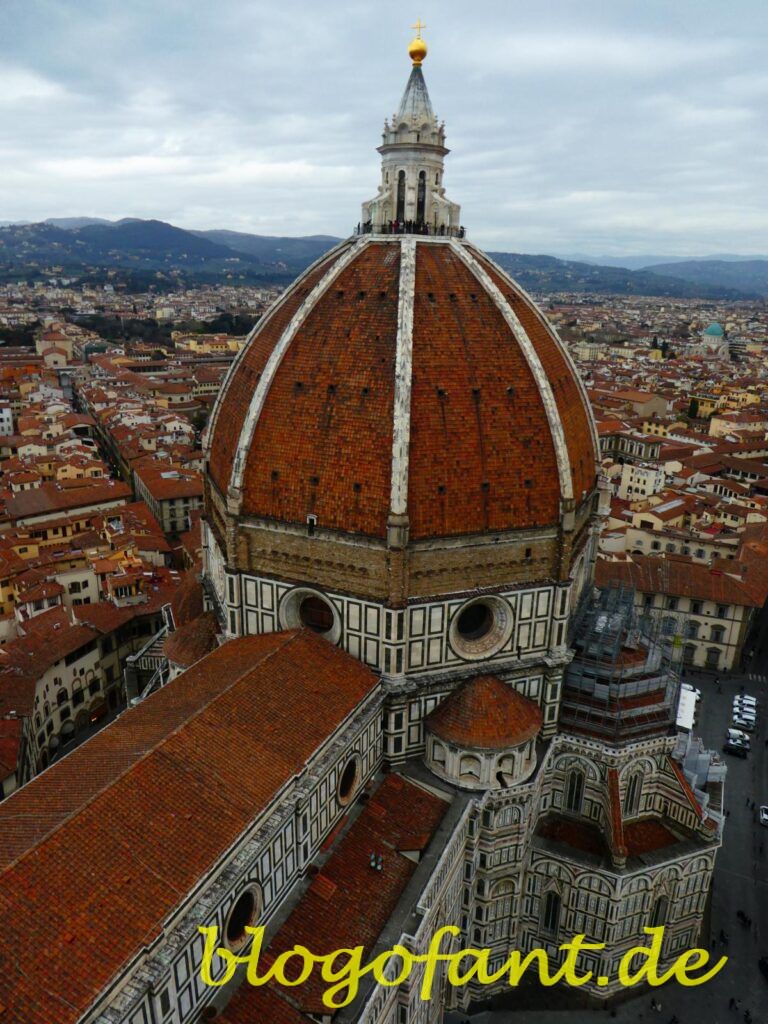
Where is Florence located?
Florence, or Firenze as it is known in Italian, is one of the most culturally rich cities in the world and is located in the heart of Italy. It is the capital of the Tuscany region and is located almost exactly in the center of the country. Located in a basin crossed by the Arno River, Florence is surrounded by rolling hills sprinkled with vineyards, olive groves and charming villas.
How to reach Florence
Florence is well developed in terms of transport and can be reached in various ways.
By Air: Amerigo Vespucci International Airport, also known as Peretola, is just 4 kilometers northwest of downtown. There are direct flights to Florence from many major cities in Europe and it is also possible to take a connecting flight via major international airports such as Rome, Milan or Frankfurt. From the airport you can take a taxi, shuttle bus or tram to get to the city centre.
By Train: Florence is very well connected to the Italian railway network and offers direct train connections to many major cities in Italy and Europe. The main train station, Santa Maria Novella, is right in the center of the city. High-speed trains such as Frecciarossa and Italo connect Florence to Rome in about 1.5 hours, to Milan in about 1.5 hours and to Venice in about 2 hours.
By Car: Florence lies on the A1 motorway, also known as the “Autostrada del Sole” and is Italy’s main artery from north to south. Note, however, that the center of Florence is a restricted traffic area (ZTL) and can only be entered with a special permit. It is recommended to park your car in one of the parking lots outside the ZTL and explore the city on foot or by public transport.
By Bus: There are numerous national and international bus services serving Florence. The main bus station is right next to the Santa Maria Novella train station.
Although Florence is a large city, the historical center is relatively small and can easily be explored on foot. Public transport in Florence is also well organized, with a network of buses and trams covering the entire city. Rent a bike or use public transport to explore the less-central parts of Florence.
Sightseeing in Florence for 1 day / 24 hours – An overview
Below are some of the sights you can visit in a day. Of course, not all of them can be visited in the short time – but this list still provides a good overview:
- Florence Cathedral (Cattedrale di Santa Maria del Fiore): The city’s landmark, known for its impressive dome by Filippo Brunelleschi and its magnificent white, green and pink marble facade.
- Giotto’s Campanile: This magnificent bell tower offers stunning views of Florence and its dome, especially if you climb the 414 steps to the top.
- Baptistery of San Giovanni: One of the oldest buildings in Florence, known for its beautiful bronze portals, including the famous Gate of Paradise.
- Piazza della Signoria: This lively square is the city’s political heart and is home to the Palazzo Vecchio and numerous sculptures, including a copy of Michelangelo’s David.
- Palazzo Vecchio: The impressive town hall of Florence, full of art and history, also offers a beautiful view from the tower.
- Uffizi Gallery: One of the most famous art museums in the world, houses masterpieces by artists such as Botticelli, Leonardo da Vinci and Michelangelo.
- Ponte Vecchio: The oldest bridge in Florence, known for its numerous jewelry shops and breathtaking views of the Arno.
- Pitti Palace and Boboli Gardens: A huge palace complex with several museums and the beautiful Boboli Gardens, one of the first “Italian” gardens.
- Santa Croce: This impressive Franciscan church houses the tombs of famous Italians such as Michelangelo and Galileo.
- Piazzale Michelangelo: A hilltop square that offers stunning views of Florence and its landmarks.
- Galleria dell’Accademia: Home of Michelangelo’s David and other works by this great artist.
- Bargello Museum: A former prison that now houses an impressive collection of Renaissance sculptures.
- San Miniato al Monte: One of the oldest churches in Florence, known for its beautiful Romanesque architecture and peaceful atmosphere.
- Mercato Centrale: A lively market where you can taste fresh Tuscan produce and traditional Italian dishes.
- Santa Maria Novella: A beautiful Gothic church known for its frescoes and Giotto’s Crucifixion.
- Palazzo Strozzi: A magnificent Renaissance palace that hosts regularly changing art exhibitions.
- Ospedale degli Innocenti: A former orphanage and the first Renaissance-style building in Florence that now houses the Museum of the Innocents.
- Medici Chapels: The ornate chapels house the tombs of several Medici princes and are known for Michelangelo’s “New Sacristy”.
- Cappella Brancacci: The chapel in the church of Santa Maria del Carmine is known for its exceptional frescoes by Masaccio, a master of the early Renaissance.
- Palazzo Medici Riccardi: The magnificent palace was the residence of the Medici family and is known for the impressive Gozzoli fresco cycle in the Magi Chapel.
Breakfast in Florence – Start your day with an Italian coffee
Start your day the authentic Italian way with a quick cappuccino and cornetto at one of Florence’s many bars. For example, try the ‘Robiglio’ bar near the Santa Maria Novella train station, where you can immerse yourself in local life and get in the mood for the day ahead. There is nothing better than having a coffee and relaxing after arriving by bus, train or car so that the day can be enjoyed afterwards. And you’ll see, Italian coffee with a small bite is a wonderful way to start the day.
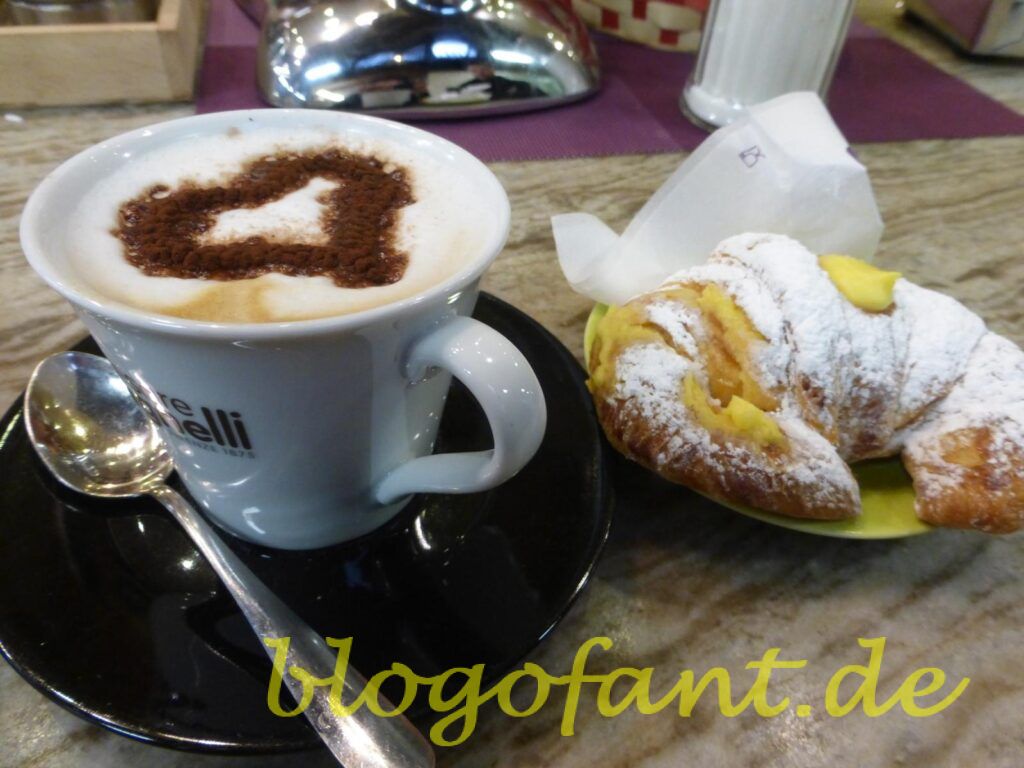
Galleria dell’Accademia
Founded in 1784, the Galleria dell’Accademia is one of the most visited attractions in Florence. The reason for this is simple: it houses Michelangelo’s unsurpassed masterpiece, the David. This exquisite marble sculpture, made between 1501 and 1504, depicts the biblical hero about to battle Goliath. Standing at an impressive 17 feet tall, the David is a perfect embodiment of physical strength and youthful beauty, a true celebration of the human form.
But the Galleria dell’Accademia is more than just David’s home. The “Museo degli Strumenti Musicali” (Museum of Musical Instruments) houses a fascinating collection of historical instruments from the “Luigi Cherubini” Conservatory and the “Instituto Musicale Lorenzo Cherubini”. You’ll discover a variety of instruments, including harps, violins, and harpsichords, helping to celebrate Florence’s musical heritage.
In addition, the museum displays an impressive collection of paintings and sculptures from the 13th to 16th centuries, mainly by Florentine artists. You can discover a range of Gothic and Renaissance paintings, including important works such as ‘Madonna and Child with Two Angels’ by Fra Filippo Lippi and ‘The Annunciation’ by Sandro Botticelli.
One of the lesser known but no less fascinating parts of the Galleria is the “Gipsoteca Bartolini”. Created by the sculptor Lorenzo Bartolini, this collection of plaster casts includes a variety of sculptures, busts and reliefs, offering a glimpse into the artist’s techniques and creative process.
It is also worth spending a moment of silence at the “Tribuna del David”. This elegant and tranquil space was specially designed to showcase the David and invite visitors to view the masterpiece from all angles.
Though often overshadowed by the more famous Uffizi Gallery, the Galleria dell’Accademia is an essential stop on any cultural tour of Florence. It offers an intimate and focused experience that takes you deep into the creativity, talent and genius of Renaissance artists. It’s a place that not only shows you the art, but invites you to linger, contemplate and be inspired by the beauty and craftsmanship.
Ponte Vecchio
The Ponte Vecchio, or “Old Bridge”, is not only one of the most famous sights in Florence, but also one of the most remarkable bridges in the world. It spans the Arno River and is one of the few remaining bridges with shops embedded along its entire length, a feature that was once common in many European cities.
The Ponte Vecchio has its origins in the Roman Empire but has been rebuilt several times after flooding and damage, most recently in 1345. It is this latest reconstruction that has given us the bridge we know and love today, with its distinctive arcades and Shops that stand out on both sides of the bridge.
During the Middle Ages and Renaissance, the bridge housed a variety of shops including butchers and tanners. In the 16th century, however, Grand Duke Ferdinando I de’ Medici ordered that only goldsmiths and jewelers were allowed to trade on the bridge, eliminating the smell and chaos of the butchers and tanners. This tradition continues to this day, and the Ponte Vecchio is a popular destination for those looking for fine Italian jewelry.
A notable architectural feature of the bridge is the Corridoio Vasariano, a private passage connecting the Medici family’s residences at Palazzo Vecchio and Palazzo Pitti. Built in the 16th century by Giorgio Vasari, this corridor allowed the Medicis to traverse the city safely and discreetly. This passageway, which spans the shops and across the Arno River, is now part of the Uffizi Gallery and can be visited on pre-booked tours.
The Ponte Vecchio is more than a bridge or a shopping mall. It is a symbol of the urban culture and history of Florence. Undestroyed by World War II – a rarity among European bridges – it stands as a shining testimony to the city’s durability and beauty.
Strolling along the Arno on a balmy evening, the Ponte Vecchio does not go unnoticed. With its gleaming gold shops and lively bustle, it’s a sight as distinctive as Florence itself. It stands proud as a living reminder of the city’s historical splendor and offers stunning views of the river and surrounding historic buildings. The Ponte Vecchio is truly a jewel in Florence’s crown, a sight not to be missed.
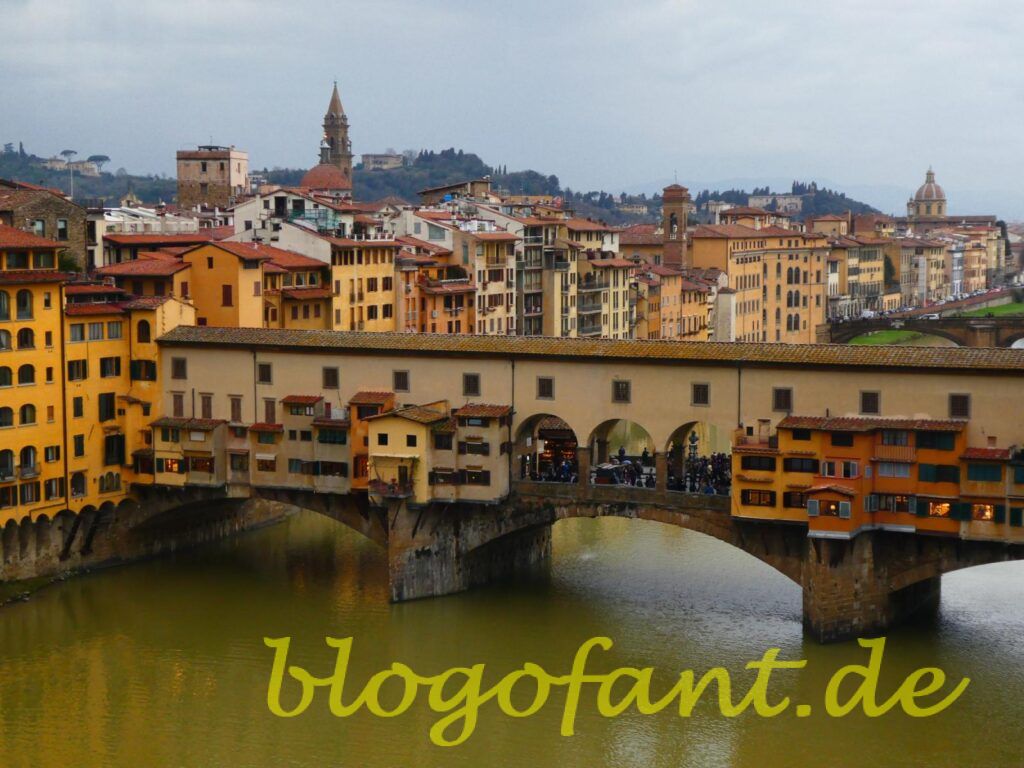
Old town with Cattedrale di Santa Maria del Fiore
Nestled in the heart of Tuscany, Florence, the cradle of the Renaissance, is a place rich in history, culture and stunning architecture. At the center of this fascinating city stands the majestic Cattedrale di Santa Maria del Fiore, also known as the Duomo of Florence, a landmark of incredible beauty and engineering feat.
The historic center of Florence, a UNESCO World Heritage Site, is a real treasure. Narrow, winding streets open onto beautiful squares, and at every step one encounters the footsteps of the artists and thinkers who shaped the Renaissance, from Michelangelo to Leonardo da Vinci.
In the heart of this historic landscape stands the Cattedrale di Santa Maria del Fiore, with its imposing white, green and red marble cladding, filigree doorways and stunning dome dominating the cityscape. Construction of this architectural marvel began in the late 13th century and spanned several centuries, with contributions from artists and architects such as Arnolfo di Cambio, Giotto and Filippo Brunelleschi.
The Duomo itself is a sight, but it’s Brunelleschi’s incredible dome that draws the attention. At 44 meters in diameter, it was the largest in the world when it was completed in 1436. Even today it is still the largest brick dome in the world. The interior Ascension of Christ, a fresco by Giorgio Vasari and Federico Zuccari, adds an extra dimension to the dome and is as impressive as the engineering feat of the dome itself.
A climb to the top of the dome is a must for any visitor. After climbing 463 steps, you will be rewarded with a breathtaking panoramic view of the city. From here you can overlook the entire historic center of Florence, with its abundance of red roofs, impressive squares and surrounding Tuscan hills.
In addition to the Duomo, the ensemble also includes the Baptistery of San Giovanni, a masterpiece of Romanesque architecture known for its impressive bronze doors, and Giotto’s Campanile (bell tower), which offers further fantastic views of the city.
Strolling through Florence’s historic center and visiting the Cattedrale di Santa Maria del Fiore is like jumping back in time. They offer an intimate encounter with the artistic and architectural wonders that have made Florence an unforgettable destination. It is a living homage to the creative genius of the Renaissance and a place that still captivates today with its timeless beauty and elegance.
Uffizi
The Uffizi Gallery is without a doubt one of the most famous and most visited art museums in the world and an unmissable highlight for any visitor to Florence. Located in the heart of the city, just off the Piazza della Signoria, the Uffizi Gallery houses an impressive collection of works of art dating largely from the Renaissance, the historical era that made Florence the cultural capital of the world.
Originally conceived as offices (or “uffizi” in Italian) for Florentine judges, merchants and magistrates, the Uffizi Gallery was built by architect Giorgio Vasari in the 16th century. Built at the behest of Grand Duke Cosimo I de’ Medici, the building was later converted into an art gallery by Francesco I de’ Medici to house the extensive art collection of the Medici family.
Upon entering the Uffizi, you will be taken on a fascinating journey through the history of art. The collection spans several centuries and includes works by some of the greatest artists of all time. One of the most famous works in the Uffizi is Botticelli’s “Birth of Venus”, a symbolic and mythical portrait of breathtaking beauty. But that’s just the tip of the iceberg. Masterpieces by Leonardo da Vinci, Michelangelo, Caravaggio and Raphael are just a few of the highlights awaiting you at the Uffizi Gallery.
The gallery is organized by periods and schools, allowing for a chronological exploration of the evolution of art. The many halls are filled with valuable sculptures, paintings and works of art ranging from the medieval to the late Renaissance, with an emphasis on Italian artists, particularly those of Tuscany.
In addition to the impressive collection of works of art, the Uffizi Gallery also offers breathtaking views of the city of Florence, particularly from the east corridor and terrace café. From here you can admire the Arno River, the Ponte Vecchio and the Palazzo Vecchio, a visual complement that will make your visit to the Uffizi Gallery unforgettable.
The Uffizi Gallery is not just a museum, but a testament to the love for art that is deeply rooted in Florence’s DNA. They symbolize the legacy of the Medici, who promoted and protected art, and the genius of the artists who made Florence the cultural capital of the world. A visit to the Uffizi Gallery is not only an encounter with art, but also an immersion in the history and culture that characterize the city of Florence. It is a place that enchants and inspires art critics and laypeople alike. The Uffizi Gallery is undoubtedly an indispensable part of Florence’s rich cultural heritage.
Pictures / Gallery – Florence in 24 hours
You can see the large format photos of the Italian city of Florence in the “Florence” post.
